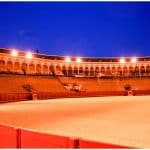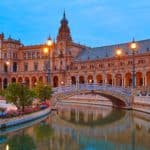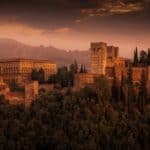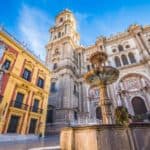Looking for the best things to do alone in Barcelona? Enjoy this fabulous city through self-guided tours and some inside local knowledge.
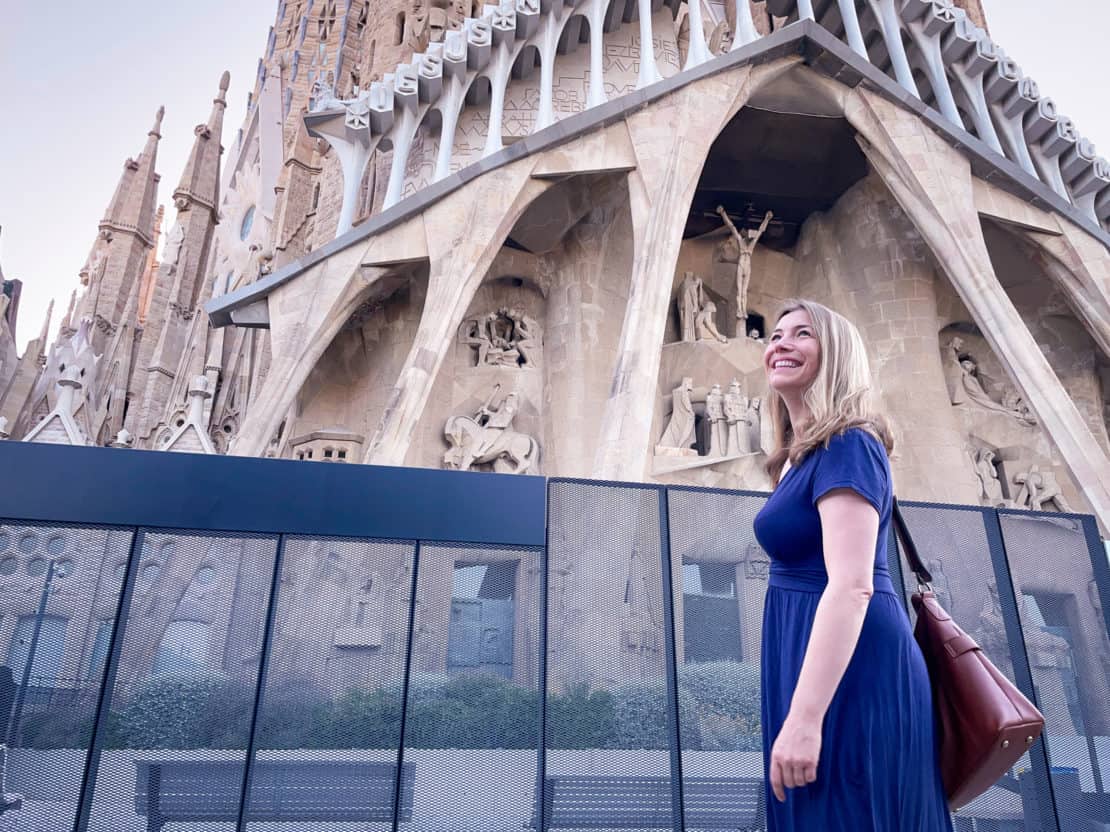
The Best Things to do Alone in Barcelona
Barcelooooooona! As one of the most in-vogue cities in the world, Barcelona bursts with history and culture and it’s one of those world class cities that everyone should visit at least once.
Personally, I’ve been many, many times. The Catalan capital is famous for Gaudi’s buildings, like the Sagrada Familia, and it was also home to some of the world’s most innovative artists like Pablo Picasso and Juan Miro.
If you are a solo traveller, you will adore it, as it offers plenty of experiences you can enjoy on your own. Either you can travel totally alone, or you can benefit from a self-guided tour app like Rewind Stories – but more about them later.
Barcelona is also a safe city: I never felt threatened as I explored the streets, gazing at the buildings or jostling through the markets and joining the crowds on the beach. Sure, pickpockets thrive in Barcelona, as in any big city, but if you keep an eye on your bag, especially in the more crowded places, you should be fine.
I had the time of my life during my visit to Barcelona: with family, with friends and then on my own.
So, if you are wondering what are the best things to do in Barcelona alone, then I’ve got you covered.
Here are 13 amazing things to do in Barcelona as a solo traveller, all worth your money and time.
A few interesting things I learned about Barcelona
- It is the capital of the autonomous community of Catalonia in Spain and has two official languages: Catalan and Castilian Spanish. Most of Barcelona’s residents speak both languages.
- Its architecture is so outstanding that it is the only city in the world to have received a gold medal from the Royal Institute of British Architects.
- Its Portal de l’Àngel is considered the busiest street in Spain, with an average of 150,000 pedestrians stepping on it every year.
- Barcelona has over 50 museums, the most popular being the FC Barcelona Museum, which attracts over 1.5 million visitors each year.
The best things to do as a Solo Traveller in Barcelona
Enter Gaudi’s World of Marvels
Barcelona and Antonio Gaudi are two inseparable entities, so well woven into each other that if one were to disappear, the other would be changed forever. So, don’t miss the iconic buildings the Catalan architect left behind. I guarantee they are worth it.
La Sagrada Familia
If this is your first time visiting the Catalan capital, make sure to include the melting spires of the Sagrada Familia on your itinerary. Along with other iconic Gaudi buildings, it is part of the UNESCO World Heritage Site of Barcelona and once you see it, you’ll understand why.
An interesting fact, and well known, fact about La Sagrada Familia is that it is still not finished. Its construction began in 1882, but more than 140 years later, on and on it goes. It is expected to be ready in 2026, exactly 100 years after Gaudi’s death. Although, by this stage, will it feel just plain strange to see the building without scaffolding around?
Regardless, in the meantime, it is already a monument of incredible beauty, with two facades in place and the third on the way.
Stop by the Nativity façade, which was built by Gaudi first and imagined by him to be the main access point into the basilica. You will immediately recognise Gaudi’s naturalist style in the images portraying the birth of Jesus.
On the West of the building, the Passion façade stands in complete opposition to the bright symbolism of the Nativity façade, as it was designed to illustrate the passions of Christ. This side is austere, crossed by long lines resembling a skeleton, and was intended to remind humanity of its sins.
The third façade is still under construction and was projected to be the most monumental of all, representing man’s ascension to God. But you’ll have to come back if you fancy a look.
Visiting Tip: The basilica gets extremely crowded during the summer months, so I highly recommend buying tickets online to make sure you get inside. But don’t leave it to the last minute. Tickets may be already sold-out days before your planned visit.
Casa Batlló
Located at number 43 on Paseo de Gracia, Casa Batlló combines the modernist elements of the 19th century with Gaudi’s vision. The famous Catalan architect admired nature’s way of creating things, always irregular but incredibly beautiful. This is why, all of Gaudi’s buildings have curved edges instead of straight lines, which he saw as violating the rules of the natural world.
Casa Batlló, with its curved façade and oval windows, painted in pink and turquoise, looks like a genuine castle of the sea, one where you would expect to find sirens and octopuses playing the piano. And if you thought the exterior was out of this world, wait until you step inside. Wherever you look, you won’t be able to find a single straight angle, which makes the building even odder. Most of the time, I felt as if I was in the belly of a whale.
This tourist attraction is visited by more than 1 million tourists every year, so once again, I recommend booking in advance.
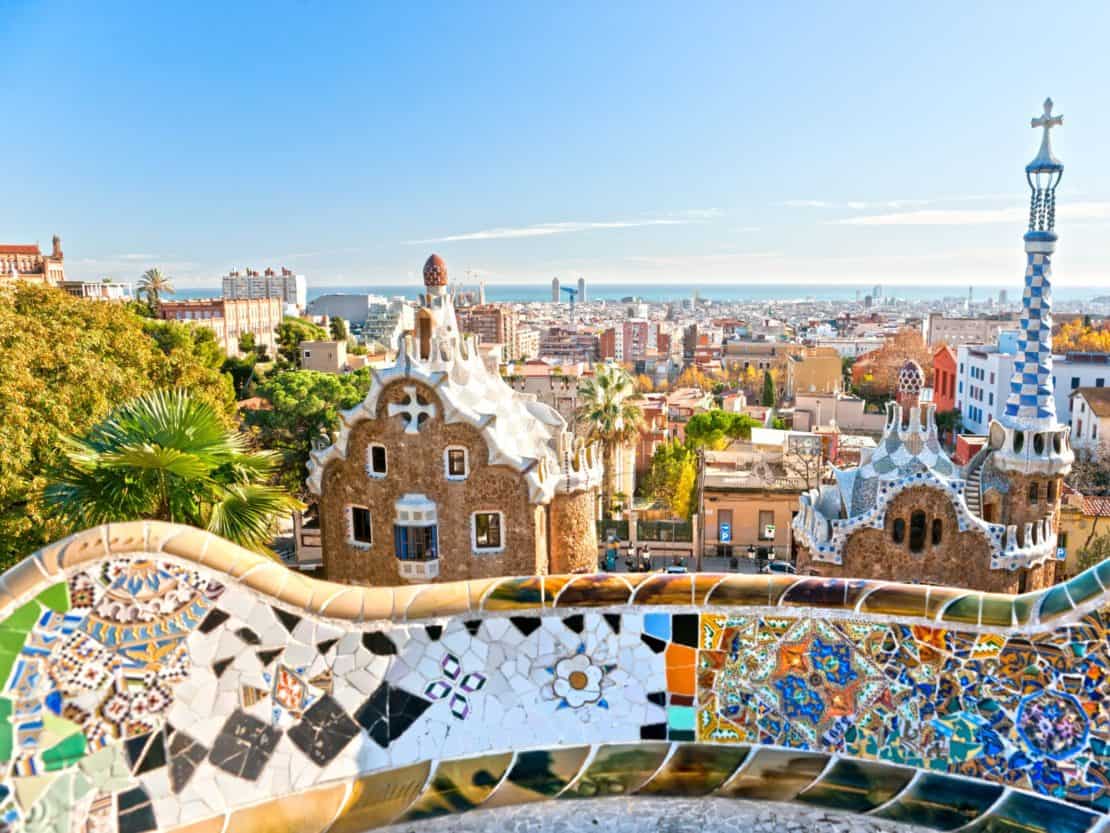
Park Güell
Located right on the edge of Barcelona, this colourful park combines a series of beautiful buildings designed by Gaudi at the beginning of the 20th century, when he was still experimenting and perfecting his naturalist style. The result involves lush greenery and exotic parrots and hawks. The park was named after Eusebi Güell, the rich entrepreneur who commissioned the work.
It is the largest park in Barcelona, spreading over a surface of 19 hectares, and the perfect place to take a break from the busy city centre.
Casa Mila (La Pedrera)
In one of those curious quirks of fate, at the time it was built, Casa Mila was hated by locals. They nicknamed it La Pedrera due to its resemblance to a rock – yet today it is one of Barcelona’s most important landmarks.
Casa Mila was actually inspired by a mountain, although no one can say for sure which one, and some people believe its interior was built to resemble a medieval fortress. What’s for sure is that, as expected from a Gaudi building, it doesn’t follow any traditional pattern and has a lot of curved lines.
Like most famous places in Barcelona, it gets extremely crowded during the high season, so pick one of your holiday’s early mornings to visit it.
Self-guided tours in Barcelona
While putting together your own itinerary can be great, it can also be time consuming and slow. Enter a self-guided tour, like those produced by Rewind Stories. Download the tour to your phone and its geolocation features will not only tell you where to go but also tell you what to do when you’re there. You can take things at your own pace, pausing for churros & chocolate, and picking up the audio commentary after that. Check them out!
Discover the Legend of Saint Eulalia
The heart of the Gothic Quarter, Barcelona Cathedral dominates the landscape with its three imposing towers and a typical gothic façade decorated with gargoyles and a lot of animals, both real and imaginary.
It is dedicated to Saint Eulalia of Barcelona, whose remains are kept in the cathedral’s crypt along with a century-old tragic history. It is told that young Eulalia suffered martyrdom during Roman rule when she was exposed naked in the public square. A miraculous snow descended from the sky in the middle of spring to cover her nakedness, but this only enraged the Romans even more, who put her inside a barrel and stuck knives into it, proceeding to roll it down the street. Eulalia was only 13 years old at the time. To honour her young age, the cathedral has a secluded Gothic cloister where 13 geese are kept.
Today you can visit her crypt and pay your respects. Also, stop for a while to admire the Holy Christ of Lepanto, a crucifix dating back to the Middle Ages. You will notice that Christ doesn’t stand straight on the cross, but his body is visibly curved. One legend says that, while being carried on the prow of a galley during the Battle of Lepanto in 1571, he leaned out of the way to avoid a cannonball coming right toward him. Another legend says that the cross was, in fact, in the ship’s hold, and the statue of Christ moved to cover a hole made by a cannonball that would have sunk the ship.
Relish the Gothic Quarter
One of the best things to do in Barcelona alone is to stroll around the Gothic Quarter. A busy, busy place inhabited for over 2,000 years, the Gothic Quarter was once home to the Fine Arts School, where Picasso studied. The school was located on Calle Avinyó, a not-too-reputable quarter at the time but colourful enough to inspire some of Picasso’s most famous works.
Probably the most history-rich place in this area is El Call, Barcelona’s old Jewish Quarter, crossed by the beautiful Sant Domenec del Call street. If you want to take some amazing photos, this is the place! Think narrow streets and old buildings that go back to the Middle Ages.
At night, the bars fill with tourists, happy to rest their feet after a day of walking around. Taste cerveza and listen to música Catalana performed by local artists. The place is pretty safe, even for solo female travellers, but I recommend avoiding the empty back alleys, especially after dark.
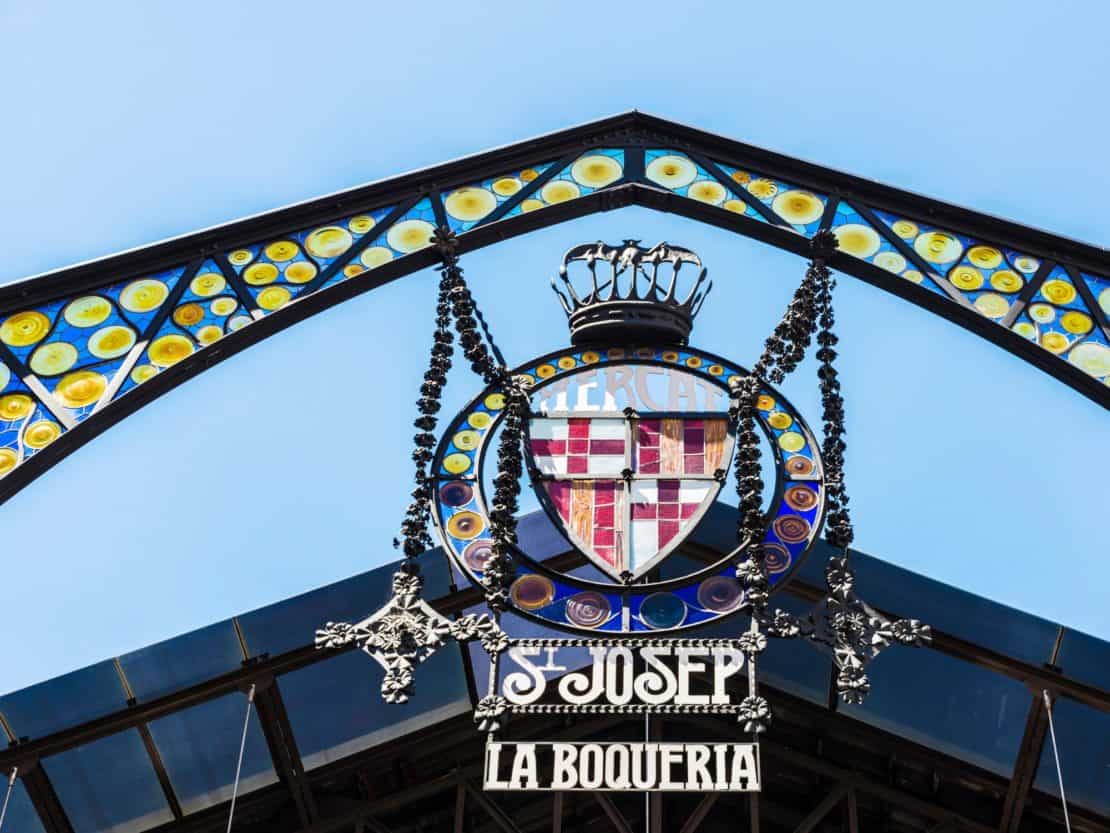
Have an Amazing Culinary Experience
Barcelona has over 20 Michelin restaurants that will welcome you with mind-blowing culinary dishes and impeccable service. However, if you want to immerse yourself in Catalan culture, you mustn’t miss the two markets located in the Gothic Quarter.
La Boqueria
Visit La Boqueria for its stands filled with delicious fruits and vegetables, as well as its many restaurants serving paella, empanadas, and mouthwatering sandwiches. (Quick side note, though, paella is for tourists. It comes from more southern Valencia.)
Try the ice cream or a cup of fresh fruits from the vendors or fill your bag with fresh meat, seafood, and fresh vegetables and cook yourself a traditional Catalan dinner. Patisserie products are also very popular, but what I really couldn’t resist were the chocolate-glazed strawberries. Both gourmets and gourmands will love this place, where the residents of central Barcelona come for fresh food or a snack during the weekends.
Santa Caterina Market
A short walk from Barcelona Cathedral takes you to Santa Caterina Market, another important landmark in any Barcelona food tour. The building is easy to spot from the distance due to its undulating roof and the few terraces, almost always full, placed at its entrance.
Rest Your Feet in Plaça de Catalunya
No matter what travel guide you follow, you will eventually end up in this big square, a favourite meeting point for the locals and a huge transportation hub. The train station is located here, right in the heart of Barcelona, as is the metro.
It’s a fun spot for people watching and sitting with a sandwich, watching Barcelona residents meet their friends, talk, and stroll around.
Feel the Vibe on Las Ramblas
La Rambla or Las Ramblas is a long street in the centre of Barcelona that extends over a distance of 1.2 kilometres. During high season, this is the busiest place in the city, with tourists taking over the pavement terraces and kiosks selling souvenirs and treats. Unfortunately, it is also one of the best places to stumble into a pickpocket so pay extra attention to your bag as you move through the crowd.
Personally? It’s not one of my favourite places in Barcelona and I always try to take one of the parallel roads. But if it’s your first time in the city, you’ll feel you need to see it. So go, see, and then get outta there!
Go See the Picasso Museum
If you are a Picasso fan, book a visit to see this thorough collection of his drawings, paintings, and ceramics works. It contains over 4,000 pieces, covering his apprenticeship years up to his Blue Period.
Some of the pieces were donated by Picasso himself, so it feels as though everything belongs there.
The best way to explore the museum if you don’t have a lot of time is to book a guided tour. The guide will help you focus on the most important pieces and you’ll learn more than you would by rushing through thousands of exhibits.
See the Mercury Fountain and Juan Miró’s Works
The Joan Miró foundation was set up by the artist himself with help from his friend Joan Prats. At first, Miró donated some of his collections and a series of his works, but with time, this place became an essential exhibition point for contemporary artists. The building itself, designed by Josep Lluís Sert, is a piece of modern art, with its large terraces and courtyards that allow visitors to reach from one side of the edifice to another through open spaces of natural beauty.
One of the biggest attractions here is Alexander Calder’s Mercury Fountain, which holds mercury instead of water and is truly a great work of art. Since mercury is poisonous, the fountain is secured behind glass. Just in case you were tempted ;-)
Shop on Passeig de Gràcia
If you are taking a Gaudi tour, you will certainly end up on this magnificent boulevard. As Barcelona was expanding in the 19th and 20th centuries, it connected the old village of Gracia to the new city centre and served as a promenade for Barcelona’s bourgeoisie. Many imposing buildings were built here at the time, and you can still look at them in awe. Casa Batllo or La Pedrera is one of them.
The boulevard is famous for its street lamps designed by Fere Falqués with their white-mosaic benches, considered to be architectural jewels. Across them, you will find some of Barcelona’s most luxurious shops, so make sure to bring your credit cards.
Get Amazed at the Montjuïc Magic Fountain
You are in Barcelona, so you cannot miss the show offered by one of the most spectacular musical fountains in Spain. It pushes up 2,600 litres of water per second, creating a sensational spectacle of light and colour, dancing to the rhythm of classical music, Disney melodies, or hits from the 80s and 90s. The most often played song is the anthem of Barcelona, performed in 1992 in front of the fountain by Freddie Mercury and soprano Montserrat Caballé. The show takes place after sunset, and there’s no fee, but make sure to get there early if you want to get a good spot.
Support Your Favourite Team at Camp Nou Stadium
Barça’s new stadium is an excellent choice for football fans, especially for those who cannot live without watching every single game the team plays. And it may actually be more accessible to single travellers seeing how it is so difficult to find enough seats close to each other to accommodate even a small group of friends.
If you are planning to attend a match, I recommend buying tickets well in advance. You will get a fair price on the team’s official website, but if they are all sold out, you can try your luck with other online vendors.
Prepare for a thrilling experience as this is a huge stadium, and there’s no way it won’t be full for an FC Barcelona game.
Reserve a Day for Mount Tibidabo
Make time to head out to Mount Tibidabo, the highest point in the city. It is an incredible spot, offering the best views over the beach and the capital.
On your way up, you’ll pass an amusement park before you continue up to the Sagrat Cor monastery right on top of the mountain. If you feel more courageous, take the lift or elevator to its highest point and gaze at Barcelona from there. It is a wonderful moment to have in Barcelona alone.
Go Sunbathing at Barceloneta Beach
I’ve saved the best for the last. Barcelona wouldn’t be Barcelona without its wonderful beach, the place which stirred Miguel de Cervantes to write his legendary encounter between Don Quixote and the Knight of the White Moon. Take an afternoon to relax or join a beach volleyball game with the locals or other fellow travellers and make new friends. As the evening settles down, have dinner at one of the many restaurants lining Barceloneta’s boardwalk and watch the waters as they get dark and mysterious.
When to Visit Barcelona
Barcelona gets overcrowded over peak season, which extends from June to August, so you will be facing large queues at the main attractions while dealing with extreme heat. It is, however, the best time to visit if you want to hit the beach.
If you are interested in visiting Gaudi’s buildings, the cathedrals, and Barcelona’s museums, October is still fairly warm but not as crowded, so you will be able to do everything at your pace.
March and April are also great months for visiting (and prices are more affordable) but check first to see the dates for Easter, as prices rise again then.
Finally, winter in Barcelona is cold and will chill you to the core! Of all the best things to do in Barcelona alone, freezing is not one of them. Wrap up warm if you plan on travelling then – or simply make the most of autumn and spring instead.

